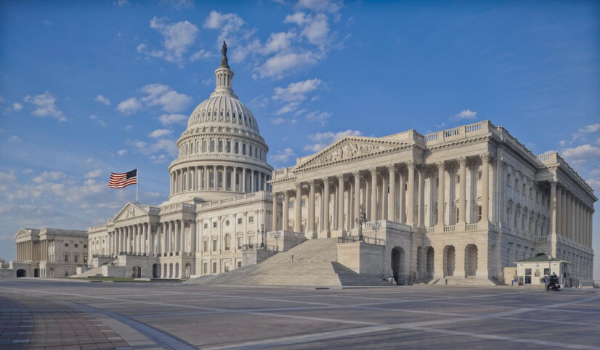On December 27, 2020, the Consolidated Appropriations Act of 2021 (the “Act”), was signed by President Trump. While the Act is mostly known for its $600 payment to most Americans making less than $75,000 per year and the expansion of unemployment benefits, it also impacts employers in a number of ways. This article discusses a few of those provisions.
1. Flexible Spending Accounts
Many employers maintain what is known as a “Cafeteria Plan”, which enables their employees to prefund certain expenses on a tax-advantaged basis. An employer’s Cafeteria Plan may include a flexible spending account (“FSA”) for healthcare expenses and an FSA for dependent care expenses. The Act changes some of the rules that govern both healthcare and dependent care FSAs.
A. Changing Election
Generally, an employee is permitted to make an election regarding participation in an FSA only once per plan year, without a “change in status”. In addition, the election is generally required to be made before the start of the plan year. The Act provides that, for plan years ending in 2021, an employee may change the amount of his or her contributions to an FSA during the plan year, without a change in status, as long as the total of the contributions does not exceed the statutory maximum. Any change in the employee’s election will be effective prospectively.
B. Carryover Amounts
FSAs used to be subject to a “use it or lose it” rule. However, the Internal Revenue Code now permits an employee to carry over unspent funds remaining in his or her healthcare FSA at the end of one plan year to the next plan year. An added benefit is that the carryover amount does not count against the maximum reimbursement amount for the following plan year. However, the amount that an employee may carry over is limited. For plan year 2021, the maximum carryover amount was $550. The Act suspends this limitation for plan years 2020 and 2021. Under the Act, an employee may carry over the entire remaining balance in his or her healthcare FSA to the following plan year. The Act also extends this carryover provision to dependent care FSAs. Prior to the Act, the carryover provision covered only healthcare FSAs.
C. Extension of Grace Period
An employer’s Cafeteria Plan may include a “grace period”. During the grace period, an employee may use funds remaining in his or her FSA at the end of a plan year to pay costs incurred in the following plan year. There are no limits on the amount that may be used in the next plan year. However, the grace period cannot extend more than two and one-half months into the next plan year. Both healthcare FSAs and dependent care FSAs may provide a grace period. The Act changed the upper limit of the grace period for plan years ending in 2020 or 2021. For plan years ending in 2020 or 2021, the grace period can extend up to twelve months.
A plan may not have both a grace period and a carryover provision. What is the difference? A grace period generally does not limit the amount of funds, which may be used in the next plan year but does limit the period during which such funds can be used. A carryover provision limits the amount that may be carried over from one plan year to the next but does not limit the period during which the funds can be used. However, since the Act changed the grace period to twelve months and eliminated the dollar limitation on carryover amounts, there does not seem to be much difference between a grace period and a carryover provision for 2021.
D. Extension Period for Reimbursements
A participant is generally permitted to obtain reimbursements from an FSA only while actively covered by the employer’s Cafeteria Plan. Under the Act, an employee may continue to receive reimbursements from a plan for the balance of the plan year, including any grace period, during which his or her participation in the plan ceases. This provision applies only to healthcare FSAs and not dependent care FSAs.
E. Plan Amendment
The foregoing plan provisions are permissible, not mandatory. This means that an employer may offer a Cafeteria Plan but is not required to. In addition, an employer’s plan may contain a carryover provision or a grace period but also may contain neither. In order to add or change a carryover or grace period provision, an employer must adopt an amendment to its plan. Generally, amendments must be adopted prospectively. For 2020 and 2021, the Act permits an employer to amend its plan retroactively. The amendment must be adopted by the last day of the first plan year after the plan year for which the amendment is to be effective. That means that, for a 2020 calendar year plan, the amendment must be adopted by December 31, 2021. For a 2021 calendar year plan, the amendment must be adopted by December 31, 2022.
2. Paycheck Protection Program
The Coronavirus Aid, Relief, and Economic Security Act (“the “CARES Act”), which was signed into law on March 27, 2020, created the Paycheck Protection Program (“PPP”). The purpose of the PPP was to support small businesses in retaining and paying employees. In addition to adding new money to the existing PPP program, the Act made other changes to the PPP program.
A. Second Draw
The Act creates what is known as a “second draw”. This enables employers that received a PPP loan during the first phase of the program to apply for a second PPP loan. In order to be eligible for a second draw, an employer must have:
i. no more than 300 employees;
ii. used or will use the full amount of the first PPP loan; and
iii. experienced a reduction in revenue of at least 25% for a 2020 quarter compared to the same 2019 quarter.
Like the original PPP program, the second draw is administered by lenders authorized by the Small Business Administration. A business that desires to apply for a PPP loan, whether a so-called “first draw” under the CARES Act or a “second draw” under the Act, should contact their lender.
B. Eligible Expenses
The intent of the PPP program is for loan proceeds to be used for payroll expenses. However, both the original PPP program under the CARES Act and the revised PPP program under the Act permit loan proceeds to be used for expenses other than salary. The Act expands the percentage of loan proceeds that may be used for expenses other than salary from 25% to 40%.
C. Deductibility
There was some uncertainty under the CARES Act whether an employer whose loan was forgiven could also deduct the business expenses paid for with the loan proceeds. The IRS took the position that an employer could not receive both loan forgiveness and deductions. The IRS characterized this as double-dipping. The Act makes clear the intention of Congress that a business may receive loan forgiveness under the PPP and deduct the business expenses paid for with the loan proceeds.
3. Employee Retention Credit
The CARES Act created an Employee Retention Credit (“ERC”), which provided a credit for eligible employers for payroll taxes paid by the employer. To the extent that the employer’s payroll taxes exceeded qualified wages, the credit resulted in a refund to the employer. The Act amends the ERC in a number of ways.
A. Extension
The Act extends the term of the ERC to June 30, 2021. Previously, the Act was set to expire on December 31, 2020. So, employers can now take advantage of the ERC through the first six months of 2021.
B. Eligibility
The Act expands the number of employers eligible for the ERC. Under the CARES Act, the ERC was available to employers with fewer than 100 employees. The Act extends the ERC to employers with fewer than 500 employees. In addition, in order to be eligible for the ERC in 2021, an employer must be prohibited from fully or partially engaging in a trade or business as a result of a governmental order or its revenue during one of the first two quarters of 2021 must be 80% less than its revenue during a comparable quarter in 2019. The CARES Act required a reduction in revenue of 50% or more.
C. Amount of Credit
The amount of the ERC is 70% of an employee’s “qualified wages” paid from January 1, 2021, through June 30, 2021. The maximum amount of an employee’s qualified wages is $10,000 per quarter. So, the maximum ERC per employee per quarter is $7,000. The amount of the ERC under the CARES Act was 50% of an employee’s annual wages.
D. Coordination with PPP
Under the CARES Act, an employer could not take advantage of both the PPP program and the ERC in 2020. The employer had to choose one or the other. The Act retroactively eliminates that restriction. An employer that received a PPP loan in 2020 can retroactively claim the ERC for wages that were not paid with the PPP loan. This is a huge benefit for employers that received a PPP loan in 2020; one that is not shared by employers who forsook a PPP loan in 2020 because the ERC provided a greater benefit. They do not have the option of retroactively applying for a PPP loan for the same period for which they received an ERC. A business that did receive a PPP loan in 2020 should consult its tax and legal advisors to determine whether it is also eligible to receive the ERC.
4. Health Plan Provisions
A. Surprise Billing
“Surprise billing” most often occurs in the context of emergency care. When an employee requires emergency care, the employee is often unable to confirm whether the hospital or doctor is “in-network”. As a result, the employee may be surprised when he or she gets a bill for the difference between the agreed-upon amount charged by the employee’s in-network provider and the amount charged by the out-of-network provider.
The Act addresses the problem of surprise billing by treating the care provided by the out-of-network provider as in-network for purposes of calculating the employee’s share of the cost of treatment. As a result, an employee’s obligation is the same whether the treatment is received in-network or out-of-network. However, this restriction does not cover all medical care and extends only to the point where the employee is stable and able to make informed decisions about his or her treatment.
The provisions of the Act regarding surprise billing go into effect on January 1, 2022. However, regulations are supposed to be issued by July 1, 2021.
B. Reporting and Disclosure Requirements
The Act imposes a number of reporting and disclosure requirements on group health plans. Beginning with plan years starting on or after January 1, 2022, group health plan identification cards must show in-network and out-of-network deductibles, out-of-pocket maximums, and a telephone number and website through which a participant can find certain information such as which hospitals and urgent care centers have relationships with the plan. While an employer needs to be aware of this obligation, the delivery of identification cards is usually the responsibility of the plan’s TPA.
Also beginning with the first plan year after January 1, 2022, if an employer receives notice that an employee is scheduled to be treated by an out-of-network provider, the employer is required to notify the employee that the provider is not in-network. In addition, the notice must provide the employee with a good faith estimate of the cost of the treatment, the plan’s financial responsibility for the treatment, the employee’s share of the cost and how much the employee has to pay before reaching the plan’s out-of-pocket maximum. Again, while the employer needs to be aware of this obligation, it is generally the TPA that will provide the notice to the plan participant.
The Act also requires group health plans to submit certain information to the Departments of Health and Human Services, Labor and Treasury. The first report is due December 27, 2021, and subsequent reports are due on each June1 thereafter. The information required to be provided includes:
1. the dates of the plan year;
2. the number of participants and beneficiaries;
3. each state where the plan is offered;
4. the 50 most popular brand prescription drugs used by plan participants;
5. the 50 most expensive prescription drugs used by plan participants;
6. the 50 prescription drugs with the greatest increase during the plan year;
7. total spending on health care by the plan broken down by hospital costs, provider costs for primary care and specialty care and prescription drugs;
8. the average monthly premium paid the employer and the plan’s participants; and
9. rebates.
As with the other reporting requirements, the information will need to be gathered by the plan’s service providers. It seems likely that regulations will be issued prior to December, 27, 2021, more clearly setting forth an employer’s obligations under the Act.



